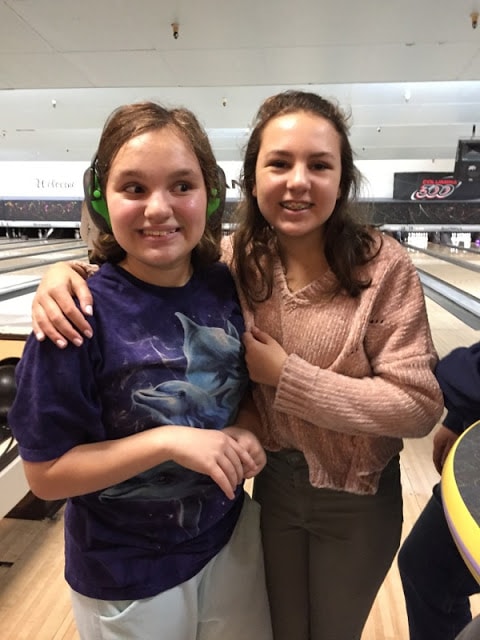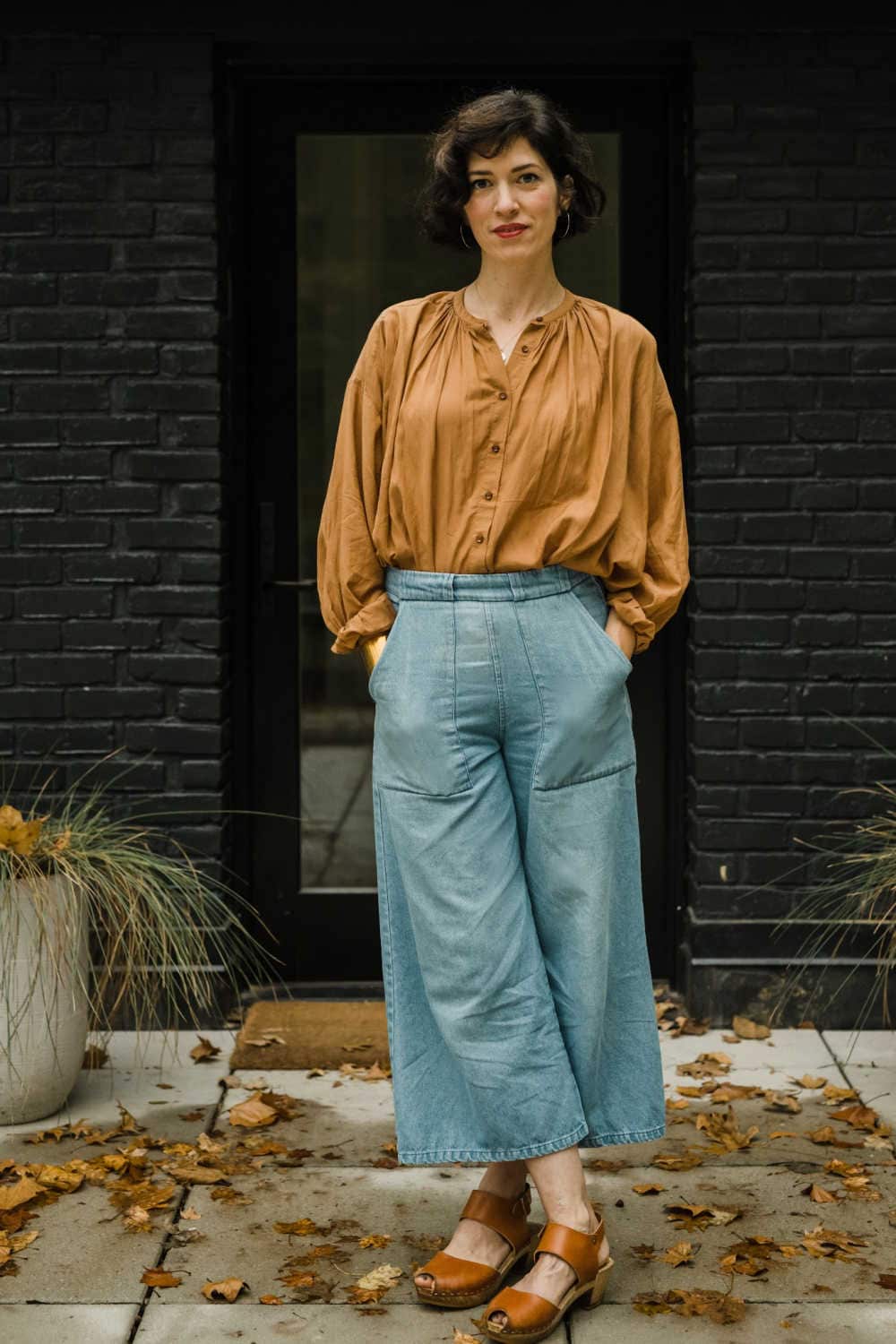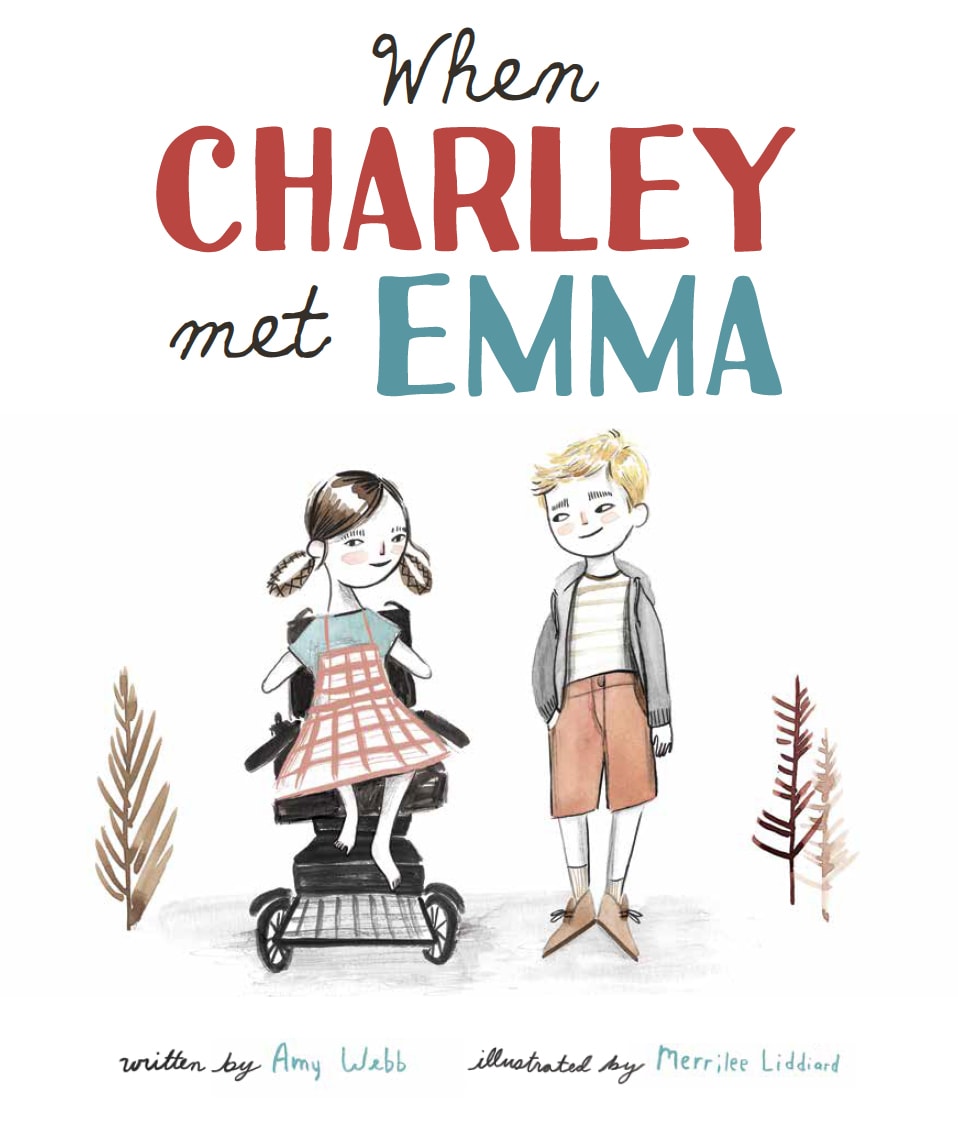Miggy: Welcome Lori. I’m so glad you are here to tell us about your daughter and to share more about her condition agenesis of the corpus callosum or ACC, which I have never heard of before. First, can you take me back to when you first learned something was not right with Nora? Was it before birth, shortly after or sometime after that? Do you remember how you felt? Can you compare those first thoughts and feelings with how you feel now?
Lori: We had our first daughter Emma 6 weeks early because of preeclampsia and I had to be induced to deliver the baby for my health. She was only 4 pounds! She was in the NICU for about 2 weeks. It was pretty scary but little did we know…
So two years later we were pregnant with baby #2. I was seeing a high risk OB to make sure my health and the baby’s health was monitored closely. At our 20 week ultrasound they found something in the baby’s brain called an arachnoid cyst. These are sacs filled with fluid in the brain and typically have no symptoms. Some people have them their whole lives and never know until they need an MRI for something else. The doctors assured us that we shouldn’t have any worries unless the baby develops seizures or bad headaches and then they may need to place a shunt in the cyst to drain it.
Fast forward to February 2006, Nora was born healthy and twice as big as Emma, 8 1/2 lbs! We had an MRI when she was 4 months old to see if the cyst had grown and they saw 2 more. There were still no symptoms so we would have another MRI at 1 year. We watched for seizures and I really tried not to worry. Then at about 9 months I noticed she wasn’t really sitting up, making eye contact, grabbing for toys, etc. All the typical things she should be doing. She also had a weird head tic, it looked like she was dropping her head to her chin. Our pediatrician wasn’t too concerned. Then at 11 months I insisted that there was something wrong. I had already signed her up for early intervention because I was convinced Nora had autism and I needed answers.
When we finally had another MRI Nora was around 13 months old. It showed the 3 cysts, which luckily did not grow or need a shunt, but it also showed that she had something called agenesis of the corpus callosum (ACC). This is a disorder that affects the part of the brain (the corpus callosum) that connects the two hemispheres and is basically the main highway for information to travel in the brain. She had partial agenesis so she was only missing the back third of her corpus callosum. The neurosurgeon then sent us to a neurologist. When we finally met with the neurologist, I was still concerned with her head tic. He sent us for an EEG to see if she was having seizures. Turns out she was and they were called Infantile Spasms (also called West syndrome). It didn’t sound too scary but turns out it was super rare and can cause serious developmental delays if not treated immediately. We were immediately sent to the hospital and started ACTH which is a first line medication to stop the infantile spasms. Luckily the spasms were gone after 5 days of treatment. The hardest part was that we had to give her daily injections of the meds for 9 weeks.
It was a very scary time for our family. I wasn’t sure what to expect of Nora’s development with so many malformations in her brain. I think I was prepared for the worst case scenario. We had no idea what her future held and I felt a loss for the life we had imagined for our daughter.
Luckily, Nora’s development skyrocketed after her infantile spasms were gone. She started crawling and walking pretty quickly although she didn’t talk until she was about 3 1/2. We kept her in early intervention preschool, speech therapy and pretty much every other therapy out there and Nora made progress in her development. She was the tortoise, slow and steady.
.jpg)
Miggy: Will you please describe agenesis of the corpus callosum or ACC–what are it’s hallmarks and the red flags to look for. And can you explain how it specifically affects your daughter’s, and your family’s, day-to-day needs?
Lori: Disorders of the corpus callosum (DCC) happen during the development of a baby’s brain. Sometimes only part of the corpus callosum forms (ACC) or it is very thin (hypoplasia). Other times the corpus callosum doesn’t form at all. The only way to diagnose a disorder of the corpus callosum is with an MRI, CT scan or prenatal ultrasound. Research suggests that 1 in 3,000 people are affected by some variation of the disorder. Many of the characteristics are similar to other disorders such as ADHD, autism spectrum disorders and other learning disabilities. People with ACC generally have delays in early development, sensory disorder, social delays, trouble with appropriate social behavior, and learning disabilities. Of course there is a spectrum of severity similar to the autism spectrum.
Looking back at our experience with Nora, I remember being so scared of the future and the unknown. From the research we did on Infantile spasms (IS) and Agenesis of the corpus callosum (ACC), I really didn’t think Nora would ever talk or be able to learn. We had genetic testing to see if she had a known disorder that fit her symptoms but nothing was conclusive. The neurologists really didn’t prepare us with any information about ACC. They just encouraged early intervention and special education. It was hard to find anyone who was going through the same experiences as us. I really felt like I was on my own. None of the doctors could help us. I searched special needs blogs everyday like it was my job. I found some other families who had kids with IS and connected with many of them. We didn’t really know that much about ACC until about 6 years ago. We finally found the NODCC and were able to attend the national conference in 2016 and will be attending this year’s conference in June.
It was harder to go places when Nora was younger because she was a runner and would escape in an instant. She wasn’t toilet trained until she was 7 or 8 so that was pretty hard as well. Nora has ADHD behaviors and has very little impulse control so she was like the Tasmanian devil sometimes. Now that Nora is 12, we seem like a pretty typical family. She bugs her older sister, she takes dance and piano lessons and she likes to play Mario Kart on the Wii. And she never. stops. talking. I can’t believe I was ever worried about her speech development! She is super social and outgoing so everyone knows her. She’s almost always happy and loves to make friends. There are a still a few obvious differences. Nora has sensory issues so she often wears sound cancelling headphones. She also has food aversions so I typically bring a PB&J or mac and cheese whenever we go out to eat. School can be hard for Nora because she has such a short attention span and cannot control her impulses which can be disruptive in the classroom. Right now I would say Nora’s biggest challenge is her social development. She loves to interact with people but her social developmental age is about 5 years younger than her actual age. We work hard at learning appropriate behavior at school and in public places.
Miggy: What are the biggest worries you face for your Nora? And, what are your hopes and dreams for her?
Lori: We hope that because Nora has made such amazing strides in her development and continues to gain skills every year, Nora will be able to live independently as an adult. That is the biggest uncertainty we face. Will she be able to get a job, go to college, or live on her own? We worry that Emma will have to be responsible for Nora when we are gone. We hope Nora will have the skills she needs to be a happy and independent adult.
Miggy: Now for a lighter question, I’m a big believer in seeing the humor in life and learning to laugh, so have you ever had any funny conversations/moments you never imagined due to your special needs situations?
Lori: Nora talks to anyone and everyone we meet wherever we go. She loves to introduce herself and ask a bazillion questions to her new friends. For a while she was super huggy and would hug friends and strangers alike. Once when we were at the grocery store, she asked a random guy what his name was and then told him her name. She then proceeded to give the guy a huge hug and said ” Oh, I love you Tony!” Tony was quite surprised to say the least. We now have the “only hug family members” rule. Nora also loves it when people cheer and clap for her. One example out of hundreds is when we were at our neighborhood pool, she was up on the highest diving board and shouted out to everyone who was on the pool deck to “watch me!” She jumped off the board and when she got out of the pool, the whole crowd erupted in cheers like she just won the Olympics! It was amazing to see her proud smile and the support I felt from our community was priceless.

Miggy: How can people best approach or respond to your Nora? Is there something you wish other people knew so as to avoid awkward or hurtful situations?
Lori: Nora is very approachable and friendly. She looks like a typical 12 year old but her social skills are not typical. Most adults are able to figure out how to steer a conversation so she tends to be drawn to adults more than kids. It’s usually her peers who have a hard time connecting with her. We haven’t had too many negative interactions but now that she is in middle school she has had her feelings hurt by other students. Nora thinks everyone is her friend and she doesn’t pick up on social cues that someone isn’t interested in talking to her. But to be honest, I’ve found that Nora usually brings out the best in most people.
Miggy: I know from firsthand experience what a special role siblings can play in your special needs journey. Is there anything you’d like to share about your other children and their relationship to Nora?
Lori: Nora’s older sister Emma is a great big sister. She has developed into a kind and empathetic young woman. It was hard for our family when the girls were little and trying to split our time and energy was challenging. Emma was always very understanding and patient with her sister. Now that they are in the tween/teen stages, they are very typical sisters who get along sometimes but other times bicker and get on each other’s nerves. Luckily, they do love each other a lot. They still have “sleepovers” in the basement or in Emma’s room which is super sweet. Nora loves to spend time with her big sister.
.jpg)
Miggy: What is the biggest lesson you’ve learned since becoming a Nora’s mom?
Lori: Being Nora’s mom has taught me many so things. I have learned that I am her biggest advocate and her biggest cheerleader. I have also learned not to limit my expectations of Nora. She surprises me every day with her love of life and ability to grow and learn. She will perform in a dance recital for the third year this spring and she just performed in her first piano recital last month. We are so super proud of her. Nora is amazing!

.jpg)


I have a daughter who had a massive stroke at 6 weeks old due to an aneurism. At 9 months old she started having Infantile Spasms. IS are terrifying! We were scheduling a hemisphereectomy when the steroids finally started working after 5 days. Like your daughter, my little one struggles with social interactions. She is 6 and we just instituted a no hugging rule (except for immediate family) so it make me chuckle to read that you have the same rule as well. The IS world is small, but you’re definitely not alone, Keep doing what you’re doing. Your Nora is lucky to have you!!!